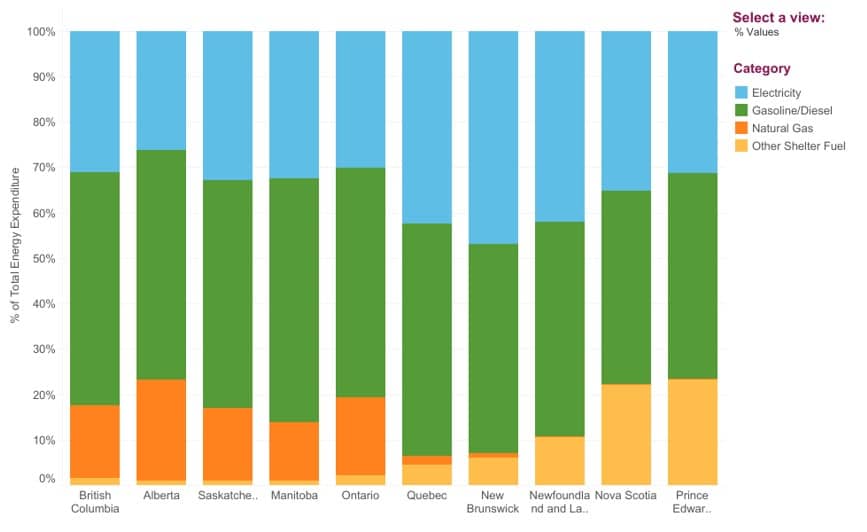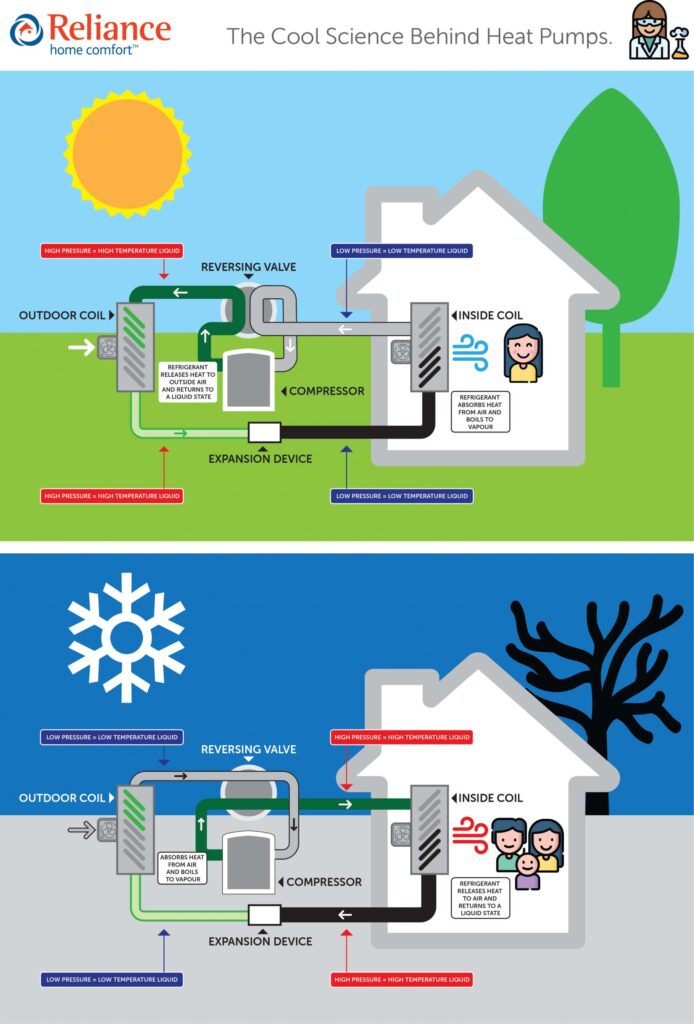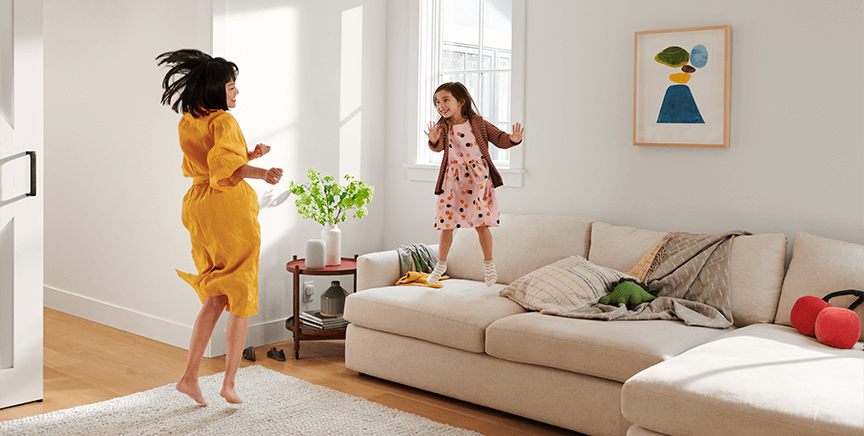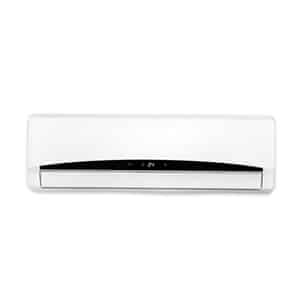Based on data from 2017, on average, nearly 12% of Canadian cumulative household expenditures are on energy. (This differs by province and region—with a lower share in British Columbia, Alberta and Ontario and higher in the Atlantic Provinces. See Figure 1 below.)1

Figure 1. Breakdown of household energy expenditures by fuel type for each province. (Source: Statistics Canada)
Yet, when you introduce heat pump technology into your HVAC system, you have the potential to use significantly less energy than ordinary electric heating. For households that heat with electricity this can lead to much lower energy consumption, which could also translate in significant cost savings on monthly energy bills.
The question is: Where does the energy savings come from in heat pump technology? To answer this, let’s look at the cool science behind heat pumps and how they work.
How Heat Pumps Work
Heat naturally moves from an area with a higher temperature to one with a lower one. A heat pump essentially captures this heat energy and pumps it in the opposite direction. So, on a hot summer day when the heat would naturally want to enter your cooler home, your heat pump will take that indoor heat and pump it out. Same goes for when it is cooler out – the warm air in your home naturally wants to escape into the cold outside but the heat pump will extract heat from outside and pump it back in2.
Heat pumps capture and transfer heat (in the form of energy) from the surrounding environment in order to heat or cool your home.
There are two important components to this:
Energy is captured from the environment: In contrast to typical furnaces which consume fuel (e.g., natural gas) to create heat—heat pump technology captures energy from an existing source (e.g., the air or the ground) and pumps it inside a space (e.g., your home).
Heat pumps can both heat AND cool: Heat pumps function exactly the same as air conditioners with the added bonus that they can be reversed to bring heat inside. Heat pump technology works on two basic principles which also govern how most air conditioners, refrigerators, deep freezes and other cooling equipment works:
a. Make a region colder than another and heat energy will flow into the colder area .
b. Fluid absorbs heat when it evaporates into a gas and likewise gives off heat when it condenses back into a liquid.3

Looking for Ways to Make Your Heat Pump Even More Efficient?
Keep these three tips in mind if you’re looking to get even more energy efficiency out of your home’s heat pump system:
- Don’t make big adjustments in temperature settings when the seasons change. Remember that backup heaters are typically less efficient than modern heat pumps. When you jump temperatures by a significant margin quickly warm your home, your backup heater is likely to kick in, which negates much of the energy savings you might have gained by using a heat pump in the first place. Instead: Set your thermostat at a relatively moderate temperature year-round, and if you need to adjust up or down, do so in small increments; you’ll still receive the benefits of the heat pump’s warming or cooling action, but will help save on energy consumption while you’re at it.
- Make sure to properly pair your thermostat with your heat pump. The majority of the smart thermostats on the market today are designed to connect and control all manner of HVAC equipment, including furnaces, ACs, dehumidifiers and heat pumps. But they’ve got to be configured correctly to make best use of their features and functionality. Call on Reliance™ and ask us how the ecobee thermostat can work seamlessly with your heat pump system.
- Check, clean and/or replace your air filters regularly. Heat pumps are an integral part of HVAC systems, and as we emphasize elsewhere, your heating and cooling equipment will run more effectively (and likely last longer too) if they’re free from dirt, dust and debris. To do: Clean and/or replace your HVAC air filters every three months or as directed by the manufacturer (or more frequently if you live with smokers or pets.
To learn more about heat pumps and air conditioning, visit our Ultimate Air Conditioning Guide!
Got questions about how a heat pump can up your home’s energy efficiency? Call on Reliance™ and get a free consultation with one of our Home Comfort Advisors today.
1Canada Energy Regulator
2Government of Canada
3J.W. Lund, 2013. “Geothermal Direct Use.” Reference Module in Earth Systems and Environmental Sciences. Available here








